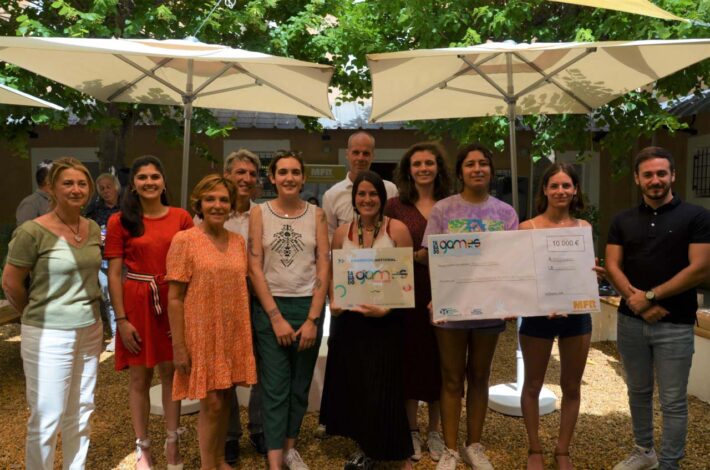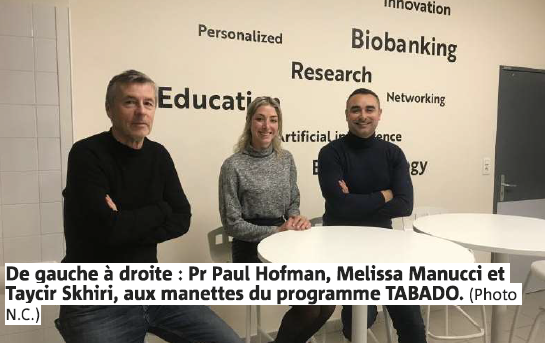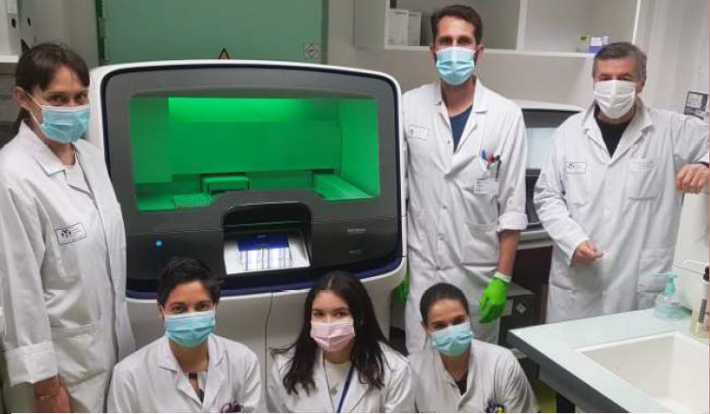New article in Journal of Thoracic Oncology
From: Marius Ilié, MD, PhD, Julien Mazières, MD, PhD, Emmanuel Chamorey, MD, PhD, Simon Heeke, PhD, Jonathan Benzaquen, MD, PhD, Brice Thamphya, MSc, Jacques Boutros, MD, Angélica Tiotiu, MD, PhD, Julien Fayada, MSc, Jacques Cadranel, MD, PhD, Michel Poudenx, MD, Denis Moro-Sibilot, MD, PhD, Fabrice Barlesi, MD, PhD, Juliette Thariat, MD, PhD, Christelle Clément-Duchêne, MD, PhD, Pascale Tomasini, MD, PhD, Véronique Hofman, MD, PhD, Charles-Hugo Marquette, MD, PhD, Paul Hofman, MD, PhD
2021 May
Abstract
Introduction: Patients with advanced-stage NSCLC whose tumors harbor an ALK gene rearrangement benefit from treatment with multiple ALK inhibitors (ALKi). Approximately 30% of tumor biopsy samples contain insufficient tissue for successful ALK molecular characterization. This study evaluated the added value of analyzing circulating tumor cells (CTCs) as a surrogate to ALK tissue analysis and as a function of the response to ALKi.
Methods: We conducted a multicenter, prospective observational study (NCT02372448) of 203 patients with stage IIIB/IV NSCLC across nine French centers, of whom 81 were ALK positive (immunohistochemistry or fluorescence in situ hybridization [FISH]) and 122 ALK negative on paraffinembedded tissue specimens. Blood samples were collected at baseline and at 6 and 12 weeks after ALKi initiation or at disease progression. ALK gene rearrangement was evaluated with CTCs using immunocytochemistry and FISH analysis after enrichment using a filtration method.
Results: At baseline, there was a high concordance between the detection of an ALK rearrangement in the tumor tissue and in CTCs as determined by immunocytochemistry (sensitivity, 94.4%; specificity 89.4%). The performance was lower for the FISH analysis (sensitivity, 35.6%; specificity, 56.9%). No significant association between the baseline levels or the dynamic change of CTCs and overall survival (hazard ratio ¼ 0.59, 95% confidence interval: 0.24–1.5, p ¼ 0.244) or progression-free survival (hazard ratio ¼ 0.84, 95% confidence interval: 0.44–1.6, p ¼ 0.591) was observed in the patients with ALK-positive NSCLC.
Conclusions: CTCs can be used as a complementary tool to a tissue biopsy for the detection of ALK rearrangements. Longitudinal analyses of CTCs revealed promise for realtime patient monitoring and improved delivery of molecularly guided therapy in this population
Full article



